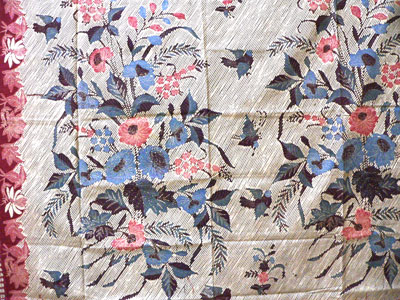
Batik Pekalongan As a Geographical Indication Potential in Indonesia
by Miranda Risang Ayu
Geographical Indication is one of Intellectual Property Rights regimes,other than Patent or Copyright,regulates a mark of a product which the quality and character of the product are essentially attributed by its place of origin.Theoretically,it could be an agricultural products,foods,or manufactures, as long as it embodies human creativity,has economic value,and widely known by its distinct character due to its geographical origin.The examples are Coonawarra wine or Batlow apples.
Indonesia has regulated Geographical Indication in the Trade Mark Law Number 15 Year 2001.Yet,there is no Geographical Indication ptential has successfully gained protection.One of the causes of this problem is likely due to the weakness of Indonesian legal system that gives less attention to the main needs of the right holders-in-context.So,it is important to assess the voice of local producers and interest groups of potential products in Indonesia to get a sense of the best Geographical Indication legal means should be developed on their favour.
Pekalongan Batik would be presented as one of the samples of Indonesian potential products.Pekalongan Batik is a special traditional Indonesian clothes called'batik' produced in Pekalongan, Central Java,Indonesia.Batik Pekalongan is only one of type of'batik' which are widely produced throughout Java and Madura islands, Indonesia, and mostly named by their place of origins, such as Yogya, Solo, Ceribon, Lasem, Banyumas, and Madura'batiks". In this respect,interviews have been conducted with the local producers and interest groups of Batik Pekalongan in Pekalongan city.
Miranda Risang Ayu is a lecturer at Law Faculty, Padjadjaran University (UNPAD), Bandung, where she got her bachelor degree. She then got her master degree in the same field from University of Techology Sydney (UTS), Australia, where she is currently pursuing her PhD degree.
She is an active columnist in several magazines and newspapers: Ummat, Suara Hidayatullah, Panji Masyarakat, Paras, Bandung Pos, Hikmah, Pikiran Rakyat, and Republika. Compilations of her columns have been published in three books: Cahaya Rumah Kita (1997), Permata Rumah Kita (2002), and Purnama Hati (2003).
She is also known as a choreographer whose two creations “Istighfar” and “Tasbih” have been widely known and discussed as they were created based on the idea to use aesthetic movements of the dress to replace the aesthetic movements of the body.
source:
http://pojok-kanayakan.net



No comments:
Post a Comment